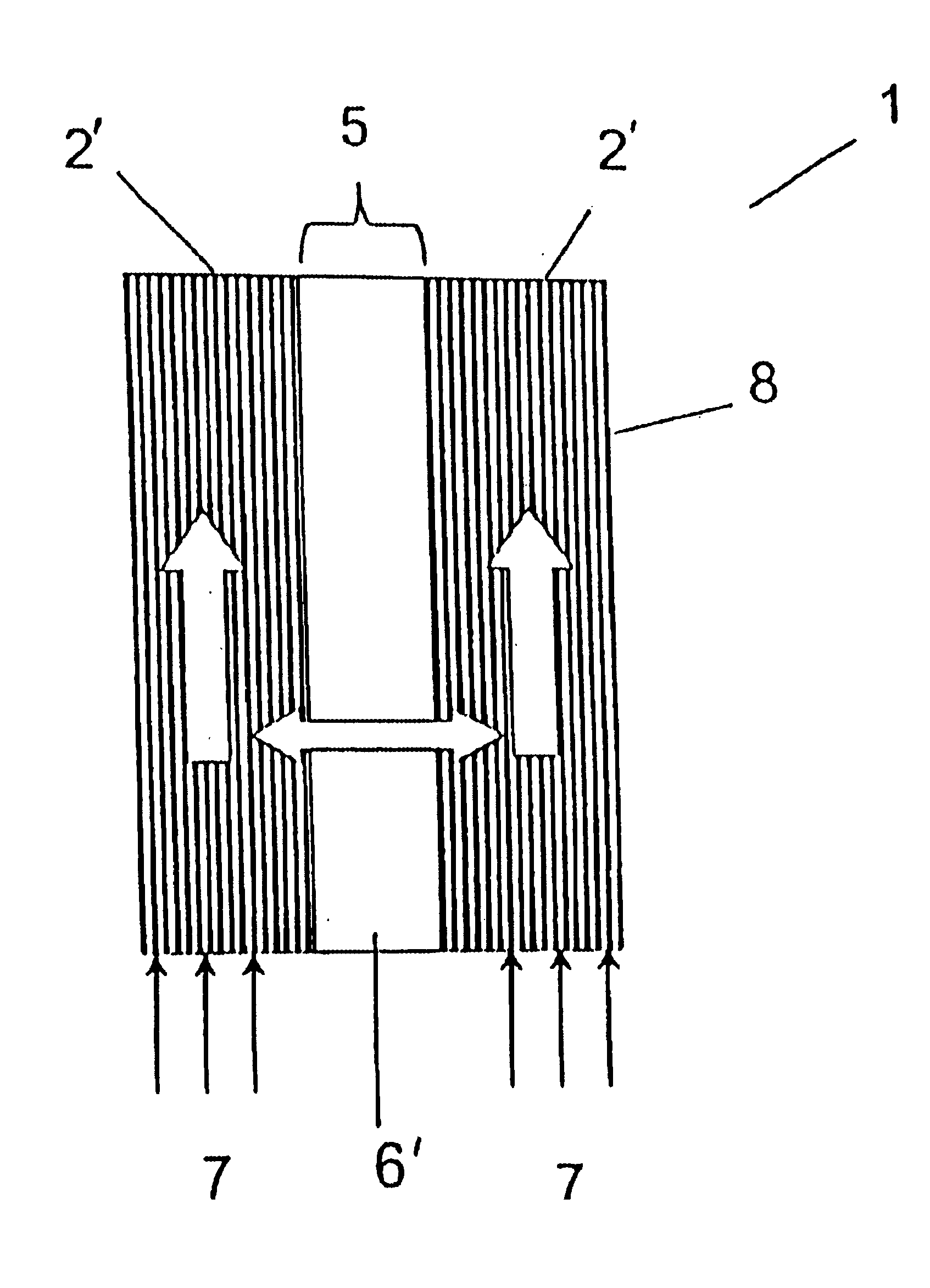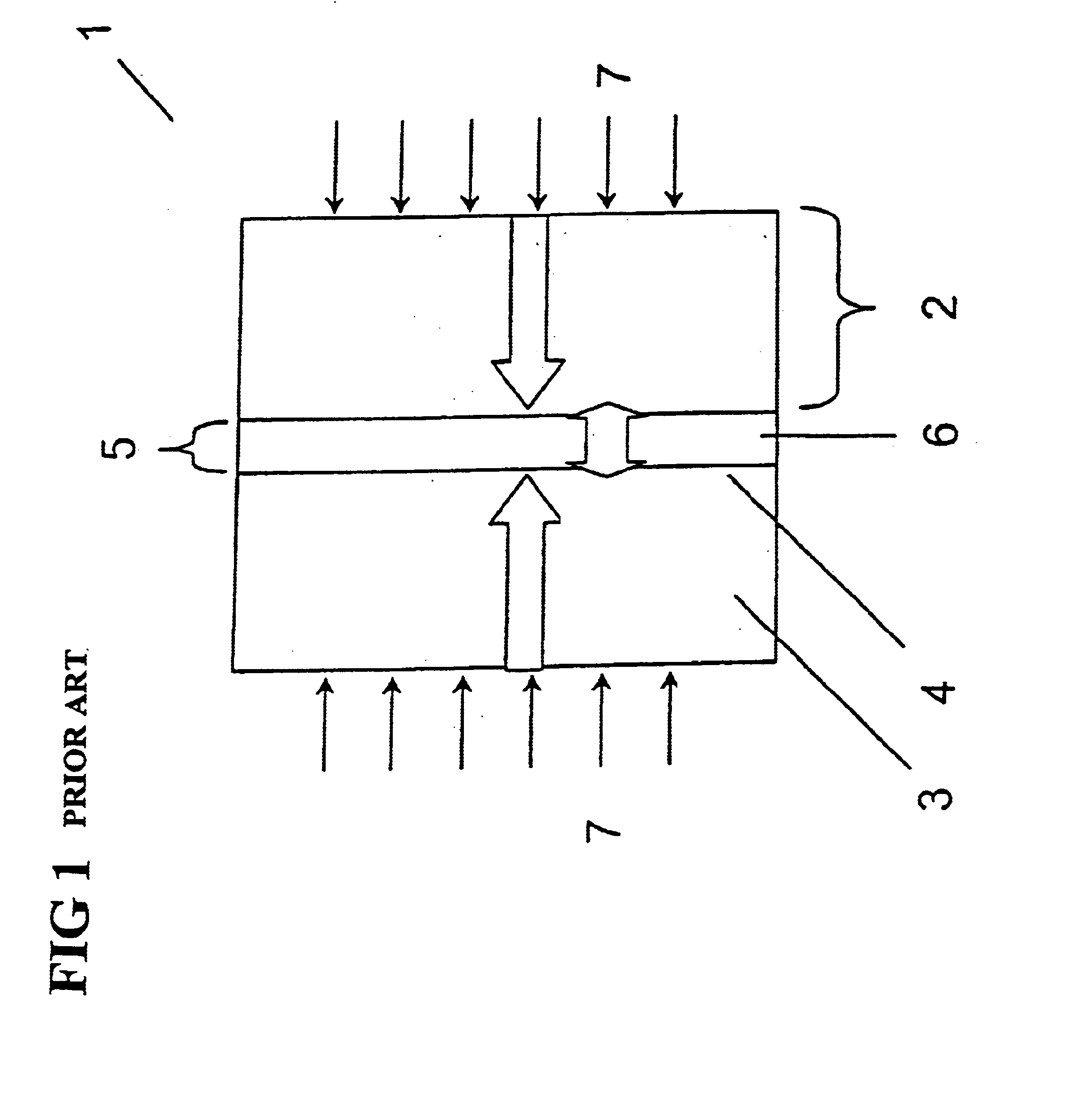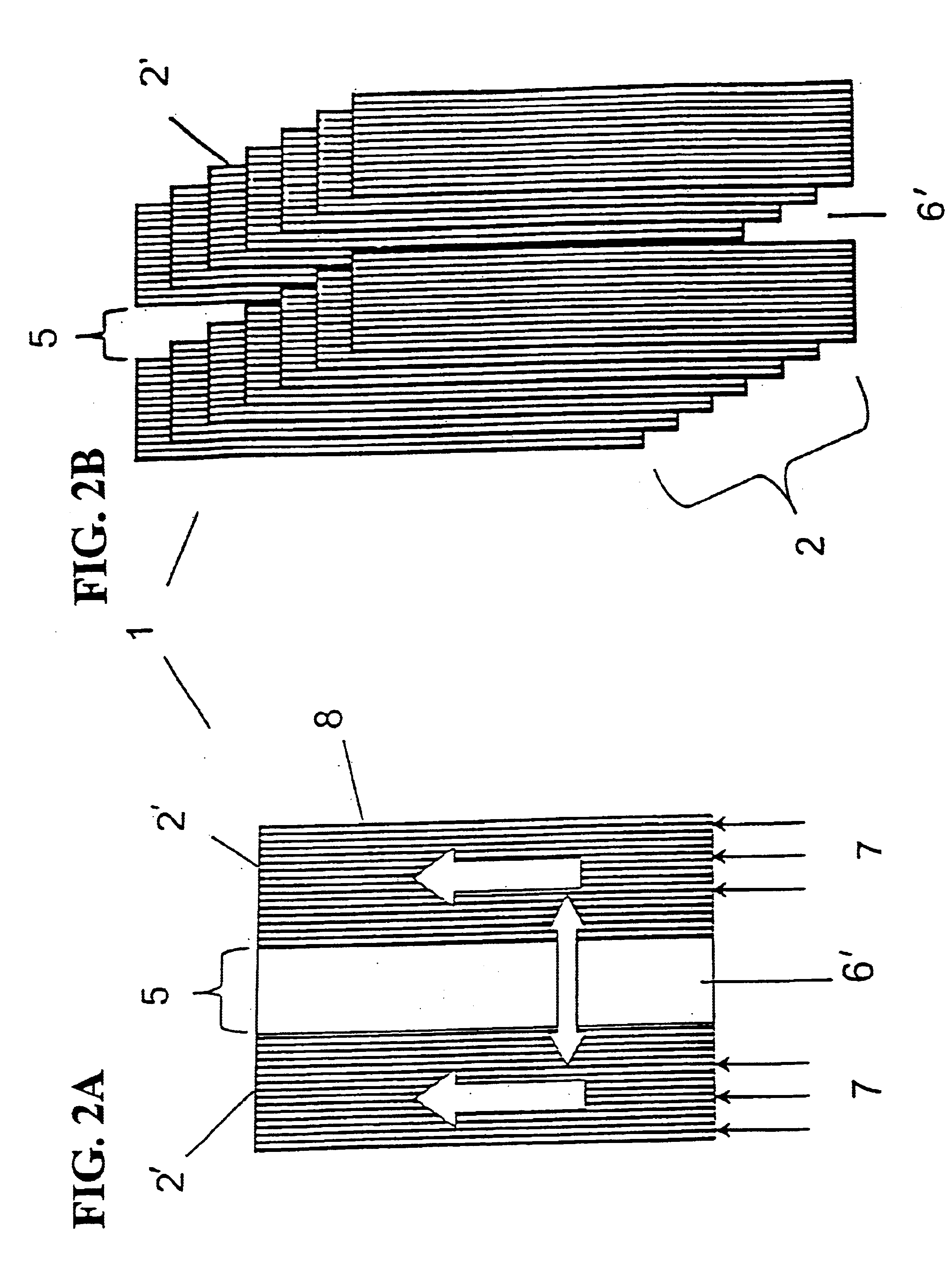Fuel cell
a fuel cell and cell technology, applied in the field of fuel cells, can solve the problems of fuel cells that cannot be used for downstream energy transformation processes, fuel cells can only be used for short-range heating and therefore only with difficulty, and the current density, temperature conditions and usability of support materials, catalysts and auxiliaries,
- Summary
- Abstract
- Description
- Claims
- Application Information
AI Technical Summary
Problems solved by technology
Method used
Image
Examples
Embodiment Construction
FIG. 1 schematically shows a fuel cell 1 according to the present-day state of the art. In general, such a fuel cell 1 comprises two gas-permeable, porous electrodes 2, which are known by the term gas diffusion electrodes (GDEs), located opposite one another. They comprise a porous, electrically conductive substrate 3 and an electrocatalytic layer 4. A membrane 6 is located within the gap 5 provided between the electrodes 2. This membrane 6 at the same time incorporates the electrolyte. The electrolyte ensures ionic charge transport in the fuel cell. It forms a gastight barrier between the two electrodes 2 and thus guarantees an electrochemically active zone within which the electrolysis can take place. The electrolyte can be a liquid. In a phosphoric acid fuel cell and in the molten carbonate fuel cell, inorganic, inert supports together with the electrolytes form a gastight matrix which conducts ions. In the case of the solid oxide fuel cell, a high-temperature oxygen ion conducto...
PUM
 Login to View More
Login to View More Abstract
Description
Claims
Application Information
 Login to View More
Login to View More - R&D
- Intellectual Property
- Life Sciences
- Materials
- Tech Scout
- Unparalleled Data Quality
- Higher Quality Content
- 60% Fewer Hallucinations
Browse by: Latest US Patents, China's latest patents, Technical Efficacy Thesaurus, Application Domain, Technology Topic, Popular Technical Reports.
© 2025 PatSnap. All rights reserved.Legal|Privacy policy|Modern Slavery Act Transparency Statement|Sitemap|About US| Contact US: help@patsnap.com



